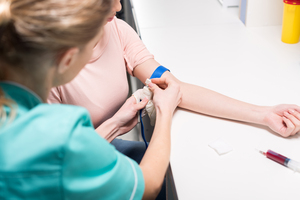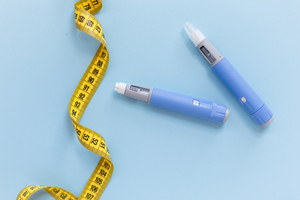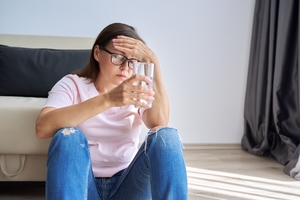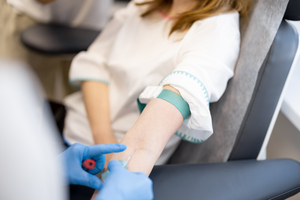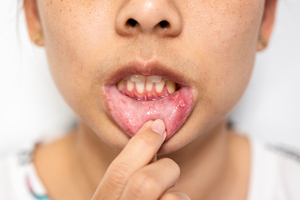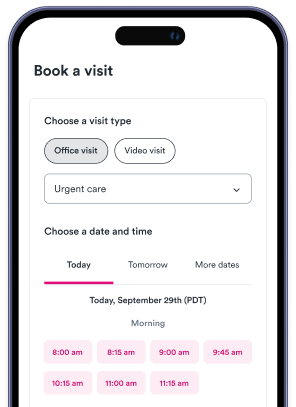Key points
- Bug bites can range from minor irritations to serious infections, and recognizing the type of bite can guide treatment and determine if medical care is needed.
- Most bug bites can be treated at home with cleaning, ice, antihistamine cream, pain relievers, and home remedies like baking soda paste or aloe vera gel.
- Signs that a bug bite needs medical attention include increased pain, redness, pus, red streaks, difficulty breathing, swelling of the face, fever, chills, and body aches.
- Preventative measures against bug bites include wearing long sleeves and pants, using insect repellent, eliminating standing water, and checking for ticks after outdoor activities.
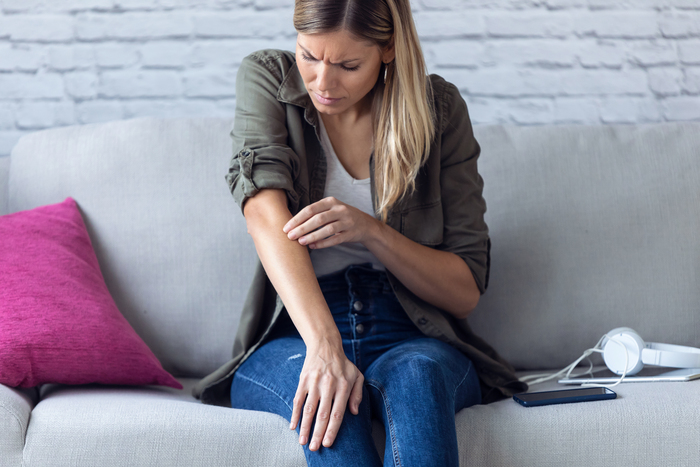
It’s almost impossible to go through summer without a few pesky bug bites, but how do you know when a simple itch is nothing to worry about and when it’s time to see a doctor? Bug bites are a common annoyance, often causing minor discomfort that can be treated at home. However, some bites can lead to serious reactions or infections that need medical attention. Knowing the difference can help you stay comfortable and safe. In this guide, we’ll break down everything you need to know about bug bites, from home remedies to warning signs that mean it’s time to get professional help.
Common types of bug bites and their symptoms
Bug bites come in many forms, each caused by different insects and resulting in a variety of symptoms. Recognizing the type of bug bite you have can help you determine the best way to treat it and when to seek medical care. In this section, we’ll explore some of the most common bug bites, what they typically look and feel like, and the symptoms you should watch for to keep yourself safe and comfortable:
Mosquito bites
Mosquito bites typically appear as itchy red bumps that can cause mild swelling or discomfort. The irritation is caused by the mosquito’s saliva, which triggers an immune response. While usually harmless, scratching can sometimes lead to infection.
Tick bites
Tick bites often start as a small red bump and may develop a distinctive bullseye rash, a hallmark of Lyme disease. If infected, symptoms can progress to fatigue, fever, and joint pain, making prompt removal and monitoring essential.
Spider bites
Spider bites usually cause redness, swelling, and pain around the bite site. While most bites are harmless, bites from certain spiders, like the brown recluse, can cause tissue necrosis, and black widow bites may produce neurotoxic effects, requiring medical attention.
Bee and wasp stings
Bee and wasp stings cause immediate pain, redness, and swelling at the site. For most people, symptoms are mild, but allergic individuals face a risk of anaphylaxis, a severe and potentially life-threatening reaction that requires emergency care.
Flea bites
Flea bites appear as small, itchy red spots that often occur in clusters or groups. In some cases, the bites can develop into blisters or hives, especially if the person has a sensitivity or allergic reaction to flea saliva.
Bed bug bites
Bed bug bites usually show up as small red bumps arranged in a linear or clustered pattern. These bites are often itchy and inflamed, and repeated exposure can increase skin irritation and discomfort.
5 ways to treat bug bites at home
Most bug bites cause mild symptoms that can be effectively managed with simple home care. Treating bites promptly and properly can help reduce itching, swelling, and discomfort while preventing infection. Here’s a detailed guide on how to care for common bug bites at home:
1. Clean the area with soap and water
- Gently wash the bite site to remove dirt, bacteria, and any residual insect saliva.
- This helps prevent infection and soothes the skin.
- Use lukewarm water and mild soap, then pat dry with a clean towel.
2. Apply an ice pack to reduce swelling
- Wrap ice or a cold pack in a cloth and apply it to the bite for 10-15 minutes.
- Cold therapy helps constrict blood vessels, reducing inflammation and numbing the area to relieve pain and itching.
- Repeat as needed throughout the day, allowing breaks between applications.
3. Use an antihistamine cream for itching
- Over-the-counter antihistamines or hydrocortisone creams can help calm the immune response causing itchiness.
- Apply a thin layer to the affected area as directed, avoiding broken skin.
- This can prevent excessive scratching, which may lead to infection.
4. Take over-the-counter pain relievers for discomfort
- Medications like ibuprofen or acetaminophen can reduce pain and inflammation associated with bug bites.
- Follow dosage instructions carefully and consult a healthcare provider if you have any concerns.
5. Try home remedies to soothe irritation
- Baking soda paste: Mix baking soda with a little water to form a paste and apply it to the bite. Leave on for 10 minutes before rinsing off to help neutralize itchiness.
- Calamine lotion: This classic remedy helps relieve itching and dries out oozing or weeping bites.
- Aloe vera gel: Known for its soothing and anti-inflammatory properties, aloe vera can calm irritated skin and promote healing.
Although most minor bug bites can be comfortably managed at home, it's important to seek medical advice if symptoms worsen or signs of infection appear.
Signs that a bug bite needs medical attention
While most bug bites are harmless and heal on their own, some can lead to serious complications. Recognizing the warning signs that indicate a bite requires medical attention is crucial for preventing infections and other health issues. In this section, we’ll highlight the key symptoms to watch for that mean it’s time to see a doctor:
Signs that a bug bite needs medical attention
It’s important to monitor bug bites closely, as certain symptoms can indicate more serious problems requiring prompt medical care:
- Signs of infection include increased pain, redness, and warmth around the bite site, which may be accompanied by pus or oozing. Red streaks spreading away from the bite are a particularly concerning sign, as they can indicate a spreading bacterial infection.
- In addition, signs of an allergic reaction demand immediate attention; these include difficulty breathing or swallowing, swelling of the lips, tongue, or face, and the appearance of hives or a widespread rash. These symptoms suggest a severe allergic response that can be life-threatening.
- Lastly, symptoms of a systemic reaction, such as fever, chills, body aches, joint pain or swelling, and neurological symptoms like headache or dizziness, may signal that the bite has triggered a more widespread reaction or infection affecting the whole body.
When to see a doctor for bug bites
While many bug bites can be managed at home, certain situations warrant a visit to the doctor to prevent serious complications. It’s crucial to seek medical attention if you’ve been bitten by venomous spiders such as the black widow or brown recluse, as their bites can cause severe pain, tissue damage, or systemic symptoms that require specialized treatment.
Tick bites accompanied by a bullseye rash or flu-like symptoms, such as fever and fatigue, should also prompt a medical evaluation, as these may indicate Lyme disease or other tick-borne illnesses. Additionally, if swelling around the bite worsens or spreads after 24 to 48 hours, it could signal an infection needing professional care. Persistent fever or a general feeling of being unwell following a bite is another red flag that should not be ignored.
Any signs of a severe allergic reaction, including difficulty breathing, swelling of the face or throat, or widespread hives, constitute a medical emergency and require immediate treatment. Finally, bites located on the face, near the eyes, or in other sensitive areas should be assessed by a healthcare provider to avoid complications and ensure proper healing.
Tips to Prevent Bug Bites
Nobody likes dealing with itchy bug bites, so taking a few simple precautions can go a long way in keeping those pesky insects at bay:
- When you’re heading into bug-prone areas — whether it’s a hike in the woods or a backyard barbecue — try to wear long sleeves and pants to create a physical barrier between your skin and the bugs.
- Don’t forget to apply a good insect repellent that contains DEET or picaridin; these ingredients are proven to be effective at keeping mosquitoes, ticks, and other insects away.
- Around your home or campsite, make sure to keep outdoor areas clean and eliminate any standing water, where mosquitoes love to breed.
- If you’re traveling to places with lots of mosquitoes, sleeping under a mosquito net can provide extra protection, especially at night.
- After any outdoor adventure, take a few minutes to check your body and clothes for ticks — catching them early can prevent serious illnesses like Lyme disease.
Find urgent care near you for bug bite concerns
If you’re experiencing worrying symptoms from a bug bite or just want peace of mind, don’t wait to get the care you need. Use Solv to quickly find nearby urgent care centers that can evaluate and treat your bite. With easy same-day booking and flexible hours, Solv makes it simple to get prompt, professional help, so you can feel better faster.
FAQs
What are the common types of bug bites and their symptoms?
The common types of bug bites include mosquito bites, which appear as itchy red bumps; tick bites, which may develop a distinctive bullseye rash and can lead to Lyme disease; spider bites, which cause redness, swelling, and can sometimes be dangerous; bee and wasp stings, which cause immediate pain and swelling and can lead to anaphylaxis in allergic individuals; flea bites, which appear as small, itchy red spots and can develop into blisters or hives in some cases; and bed bug bites, which usually show up as small red bumps arranged in a linear or clustered pattern.
How can I treat bug bites at home?
Bug bites can be treated at home by cleaning the area with soap and water, applying an ice pack to reduce swelling, using an antihistamine cream for itching, taking over-the-counter pain relievers for discomfort, and trying home remedies like baking soda paste, calamine lotion, or aloe vera gel to soothe irritation.
When should I seek medical attention for a bug bite?
You should seek medical attention for a bug bite if you notice signs of infection such as increased pain, redness, and warmth around the bite site, pus or oozing, or red streaks spreading away from the bite. Also, symptoms of an allergic reaction like difficulty breathing or swallowing, swelling of the lips, tongue, or face, and the appearance of hives or a widespread rash require immediate medical attention. Additionally, systemic symptoms like fever, chills, body aches, joint pain or swelling, and neurological symptoms may indicate a more serious condition.
What are some precautions I can take to prevent bug bites?
To prevent bug bites, you can wear long sleeves and pants when heading into bug-prone areas, apply a good insect repellent that contains DEET or picaridin, keep outdoor areas clean and eliminate any standing water, sleep under a mosquito net if you're traveling to places with lots of mosquitoes, and check your body and clothes for ticks after any outdoor adventure.
How can I find urgent care near me for bug bite concerns?
If you're experiencing worrying symptoms from a bug bite or just want peace of mind, you can use Solv to quickly find nearby urgent care centers that can evaluate and treat your bite. Solv offers easy same-day booking and flexible hours.

